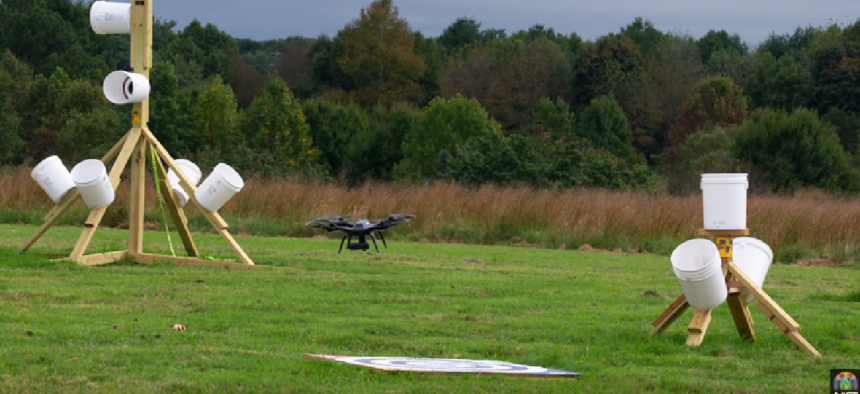Agility training for responder drones

To ensure that emergency response teams using drones can all perform basic maneuvers, NIST has developed test methods that measure both the capabilities of drones and the skill of their pilots.
The National Institute of Standards and Technology has developed an agility test for first responder drone operators.
To ensure that police, fire and medical emergency teams using unmanned aerial vehicles in emergency situations can all perform basic maneuvers to an adequate safety and proficiency standard, NIST has developed test methods that measure both the capabilities of drones and the skill of their pilots.
The 10 tests include making sure the pilot can execute an accurate landing, vertical climbing and straight and level flying, NIST officials said. Functionality tests evaluate the pilots' ability to perform circular orbits to identify objects from afar as well as spiral maneuvers for close-range inspections.
The test range can be built in a few hours from two-by-fours, plywood sheets and 5-gallon buckets.
"We try to make the tests as simple as possible for someone to run," NIST mechanical engineer Kamel Saidi said in a NIST video. "Also, cheap to build so that everybody, every first responder, can go out and buy the materials and build it cheaply, and be able to set it up wherever they need it."
“Primarily, these tests are implemented using white buckets with black rings inscribed inside them,” said Adam Jacoff, a NIST robotics research engineer. “The pilot uses onboard cameras to align with and identify the targets, perform a task such as reading a hazardous material label or detecting motion, and then move on to the next drill.”
“For the aircraft, it’s like testing a car on a speedway track to make sure it works as designed," Saidi said. "For the pilot, it’s like a driving test to prove he or she can operate a specialized vehicle that’s not for everyone, such as a commercial truck.”
The tests provide a numerical score for the aircraft and the pilot that responder agencies can use to set proficiency levels. They also give pilots a chance to practice and improve their scores.
NIST is developing more than 20 additional aerial test methods for navigating hallways within buildings, searching and mapping wide areas and avoiding situations that may interfere with radio communications.
The detailed standard, which also includes organizational program criteria and considerations, professional qualifications for safety personnel and elements of a maintenance program, has been issued by the National Fire Protection Agency and is available here.






